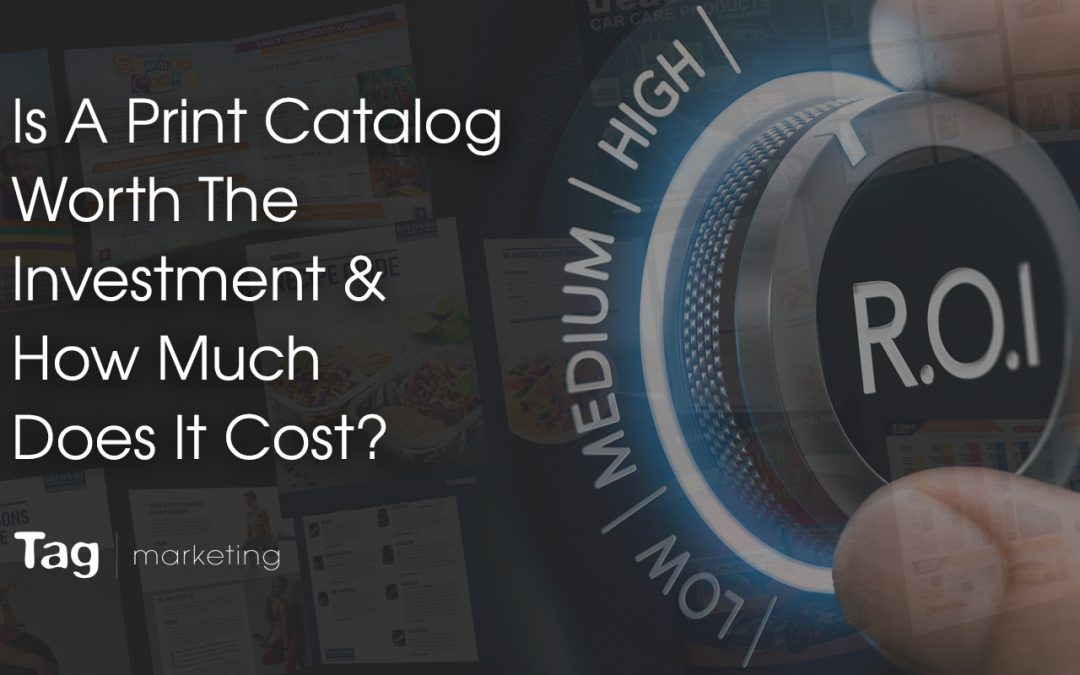5 minute read
Print catalogs may seem outdated at first glance. But consider the unique opportunity print gives you. A physical book with pages a potential customer can turn is a tangible, memorable experience. It brings the shopping experience to them in unique and shareable ways. A couple or family can view a catalog together, make plans, and choose their favorite items. It creates an experience.
Print Catalogs are Chic
Let’s take a moment to consider Wayfair, the home goods and furniture retailer. They have been online since their inception in August 2002. Wayfair has always made it a point to be at the forefront of technology. For example, they purchased an augmented reality platform to recreate the experience of having an interior designer in your home.
Meanwhile, they’re also putting their ad spend into something less modern, print. From catalogs to direct mailers like mini-catalogs and postcards, print is the “in” thing to do. On the surface, this may seem counterintuitive, but in a time where Facebook and Google are inundating users with ads, standing out is essential.
These may not be the days of Sears or JC Penny with their iconic catalogs, but IKEA still sends a much-coveted catalog. Similarly, e-retailers like Bonobos, Everland, and Boll & Branch all use print catalogs for customer acquisition and loyalty. Even Amazon has done printed toy catalogs.
Still feeling skeptical? Land’s End surveyed customers as they placed orders, asking if they had seen a catalog before placing the order. A whopping 75% of respondents said yes! In fact, a CNBC article detailing findings from the Data & Marketing Association suggested, “the response rate for catalogs has increased in recent years in part because less mail is being sent and millennials happen to like catalogs more than other age groups do.”
But Will A Catalog Work For Your Business?
Do you remember the Sears Wish Book? You may not be selling toys, but you can certainly use your book to garner the same feelings for your products. Marking pages and making notes is an unmistakably interactive experience. You’re not interrupting like your Facebook ads do; you’re getting invited into a client’s home. No matter your industry, you can take advantage of these positive feelings.
Combine Print Pages With Customer Data
The exciting thing about the digital age is the ability to combine customer data with the analog, tactile nature of print. You can analyze transactions, average order values, user preferences, and interests. You don’t have mail everyone. You can easily segment your digital data and reach out to those most likely to physically buy or interact.
In our data-driven world, you can evaluate and segment any particular data sets you’d like. Then, tailor catalogs to each audience. For example, new prospects get one version while loyal customers get another. It’s possible to direct specific messages to various buying tiers or create offers that fit your customer subsets.
Print can have the appeal of digital, like targeting, without the invasive nature. You won’t be competing for attention on the screen. Instead, you can win screen-free moments of 100% dedication, which will allow your products to get the fair chance they deserve.
Driving Traffic To Your Website and Physical Store
Print catalogs offer more opportunities than a quick sale. They allow you to drive traffic to the place of your choice. You can include special discount and QR codes and drive traffic to microsites customized to the materials they received. There are so many options it would be difficult to talk about all of them here.
If you have a physical storefront, it gets eyes on your products before people have to leave the comfort of their home. They can make their wishlist and come in to physically test out your products. Think about it as shopping from the couch. Many do it on their phones and computers, why not with paper?
But what about conversion rates, you ask? It’s not as tough as it sounds. You’ll just need to link purchases with the database of names you sent catalogs out to. Special discounts or gift codes can assist you by giving a quick means of data analysis.
You’re on board, but are you worried about cost?
How Much Catalog Design Costs
Print design isn’t more or less expensive than other types of graphic design. If you hired a designer to create digital banner ads, an online catalog, or develop webpages, you’ll find the cost comparable.
| PAGES | COST |
| 8 | $1,200 |
| 12 | $1,500 |
| 24 | $2,700 |
| 48 | $3,600 |
| Custom Package | Contact us for pricing |
Trendy Yet Retro, Print Catalogs Offer Great Opportunity & ROI
Now that you know more about the benefits of print catalogs, don’t think about it as an additional cost but as a part of your marketing budget. It’s a chance to stand out, break through the noise, and showcase your products.
You can communicate messages for specific audiences and target high-value buyers. With the power of digital, coupled with the immersiveness of print, you can craft highly successful campaigns that a single medium can’t.
